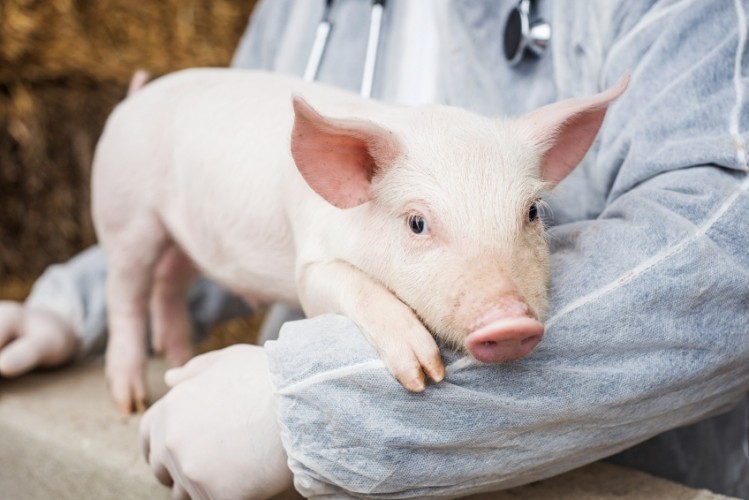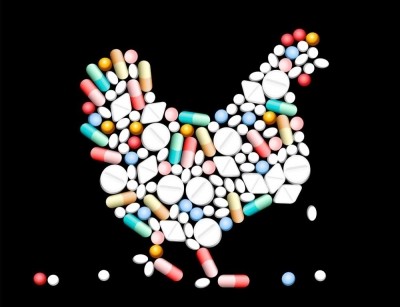Animal Health Institute hits back
'The issue of disease prevention is a very large loophole' - no let up from consumer advocates on FDA antibiotics policy

In 2013, the US Food and Drug Administration (FDA) called on drug firms to voluntarily stop labeling medical important antibiotics as usable for promoting animal growth or feed efficiency by December 2016 and the agency said, thereafter, therapeutic use of these products would require veterinary oversight.
In June 2014, the FDA said all pharma companies involved were on board with this strategy.
However, Michael Hansen, senior scientist with the Consumers Union, told us last week that only one product out of the 293 covered by the FDA's plan has, so far, had a growth claim removed.
“And, even if the companies do fully comply and change the labels on the other 292 products, which they said they would do, the issue of disease prevention is a very large loophole,” he added, echoing the concerns of many other public interest bodies in the US on the same subject.
Disease prevention often includes long-term low level doses of antibiotics as does growth promotion, said Hansen. “Indeed, the vast bulk of antibiotics that were used for growth promotion purposes also are approved for disease prevention — often with the doses and duration of treatment being very similar,” he claimed.
Hansen also questioned whether veterinarians will have meaningful oversight of antibiotic use under the FDA strategy:
“While it's wonderful that the FDA has finally required, via the veterinary feed directive (VFD), that all medically important antibiotics will only be available under a vet's description, questions remain over the impact of this policy.
In some cases, veterinarians work for the livestock producer or processor - will they phone in prescriptions from out of state without ever seeing a farm?
Will producers be able to easily acquire prescriptions so that they can continue using antibiotics as cheap production tools to ‘prevent disease’ in crowded and unhygienic farming environments?
In other words, will overall antibiotic use remain the same, and fail to decrease the risk to public health?”
AHI retaliation
Ron Phillips, vice president for legislative and public affairs at veterinary health lobbyists, the Animal Health Institute (AHI), said Hansen’s claim that only one of 293 products has had its growth promotion indications removed “is based on misuse of FDA information and on misunderstanding the 209 [FDA’s judicious use of antimicrobials guidance for industry] process.”
This is what the FDA said in August this year: “Some of these sponsors [drug companies] have already started implementing the recommended changes to their affected antimicrobial products: three applications have been converted from over-the-counter to prescription dispensing status; production indications have been withdrawn from one application; and 32 affected applications have been completely withdrawn.”
And Phillips stressed that some of those 32 [affected applications that have been completely withdrawn] likely include growth claims.
“Consumers Union misconstrues the 293 number. These are not all growth claims. These are the total NADA’s [new animal drug applications] that require some change to comply with the FDA policy. Some of these are growth claims only, some are existing therapeutic claims that only require a change to VFD status, and some are both,” said the AHI public affairs specialist.
Phillips told FeedNavigator that Consumers Union: “is using this to leave an impression that sufficient progress is not being made and that could not be more wrong. The fact is that most of these changes will be made simultaneously at the end of next year. As a matter of competitive fairness, changes must be made at the same time and the FDA and sponsors have been working diligently to discuss the details of how to accomplish these massive changes all at once.
The 209 process is succeeding in eliminating production uses of medically important antibiotics. When fully implemented by the end of next year, it means medically important antibiotics will be used in food animals only to fight disease under the supervision of a veterinarian.”
FDA talks therapeutic uses
Meanwhile, a spokesperson for the FDA, Megan Bensette, told us today that the agency wants to also ensure that approved therapeutic uses of medically important antibiotics are consistent with judicious use principles:
“To this end, the FDA has begun reevaluating therapeutic products of concern to ensure they are labeled to treat, control, or prevent specific disease conditions for a set duration of time. Although the agency may also look at other factors as part of this reevaluation process, such as dose levels, its primary focus at this time is on medically important antibiotics with no limits on their dosing duration.
In the case of disease prevention use, the FDA believes it is important that such use is appropriately targeted to animals at risk for a specific disease and that the use duration is limited and risk-based.
Additionally, the National Action Plan for Combating Antibiotic-Resistant Bacteria calls for the identification and implementation of measures to foster stewardship of antibiotics in animals. The FDA believes long-term or open-ended use of medically important antibiotics is a significant stewardship issue," she said.
The current status of the 293 drugs affected by the FDA guidance can be read here.
The FDA's updated report on its antibiotic strategy can be accessed here.















